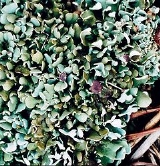
Lecanoromycetes
Encyclopedia
Lecanoromycetes is the largest class of lichenized fungi. It belongs to the subphylum Pezizomycotina
in the phylum
Ascomycota
. The asci
(spore
-bearing cells) of the Lecanoromycetes most often release spores by rostrate dehiscence
.
Pezizomycotina
Pezizomycotina contains the filamentous ascomycetes and is a subphylum of the Ascomycota . It is more or less synonymous with the older taxon Euascomycota...
in the phylum
Phylum
In biology, a phylum The term was coined by Georges Cuvier from Greek φῦλον phylon, "race, stock," related to φυλή phyle, "tribe, clan." is a taxonomic rank below kingdom and above class. "Phylum" is equivalent to the botanical term division....
Ascomycota
Ascomycota
The Ascomycota are a Division/Phylum of the kingdom Fungi, and subkingdom Dikarya. Its members are commonly known as the Sac fungi. They are the largest phylum of Fungi, with over 64,000 species...
. The asci
Ascus
An ascus is the sexual spore-bearing cell produced in ascomycete fungi. On average, asci normally contain eight ascospores, produced by a meiotic cell division followed, in most species, by a mitotic cell division. However, asci in some genera or species can number one , two, four, or multiples...
(spore
Spore
In biology, a spore is a reproductive structure that is adapted for dispersal and surviving for extended periods of time in unfavorable conditions. Spores form part of the life cycles of many bacteria, plants, algae, fungi and some protozoa. According to scientist Dr...
-bearing cells) of the Lecanoromycetes most often release spores by rostrate dehiscence
Dehiscence (botany)
Dehiscence is the opening, at maturity, in a pre-defined way, of a plant structure, such as a fruit, anther, or sporangium, to release its contents. Sometimes this involves the complete detachment of a part. Structures that open in this way are said to be dehiscent...
.

